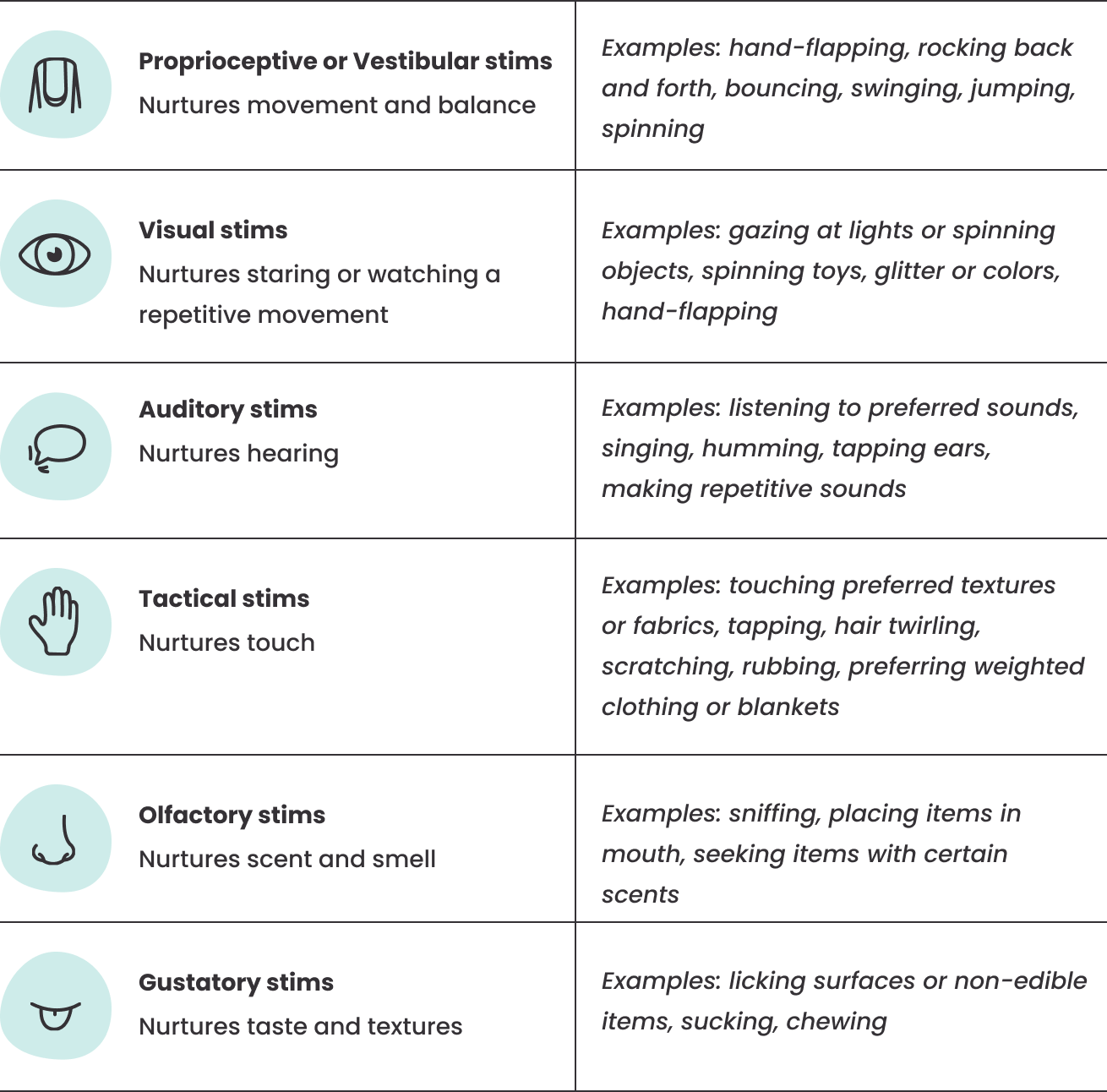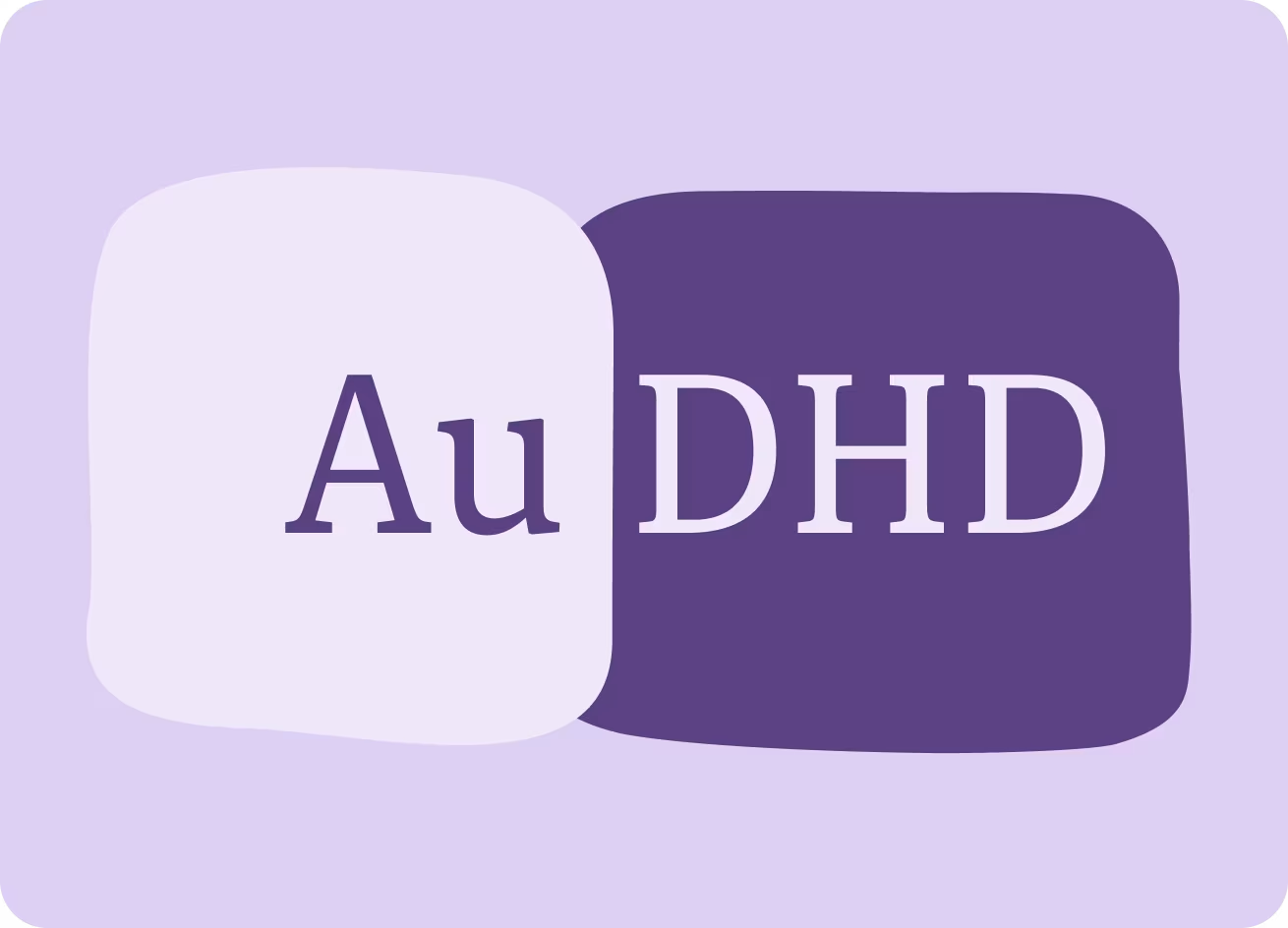Stimming in Autism: What It Is and Why It Matters
Stimming Summarized
Stimming, short for self-stimulatory behavior, is most commonly associated with autism spectrum disorder. Although this behavior is in the criteria for an autism assessment, stimming is a human behavior that extends beyond neurodivergent individuals. For example, the act of bouncing a leg while sitting or gently rocking back and forth in a chair; these repetitive and unconscious movements serve to regulate emotions, maintain focus, or provide a sense of comfort to at least one of the five main senses of the body.
Stimming Types and Behaviors
Most stimming behaviors can be grouped into the following categories:

Stimming and Autism
For many autistic children, stimming serves as a self-regulation tool to relieve stress, manage overwhelming emotions, cope with sensory input or find a sense of calm. Stimming might also be triggered by:
- Engaging in a new setting or unfamiliar environment
- Helping keep focus on concentration
- Expressing happiness, joy or excitement
- Self-soothing
- Communicating needs, emotions, feelings or discomfort when verbal communication seems challenging
- Coping (or self-regulating) with intense emotions like anxiety or excitement
- Naturally displaying ways in which brain processes information
- Decreasing feelings of physical pain
- Navigating sensory overload or under-stimulation (under or over-stimulation)

Stimming and its Importance
Stimming is often a way for children to express their emotions or cope with their surroundings as well as a way to self regulate. Rather than trying to stop the behavior completely, it’s far more helpful to understand and support it. Learning what triggers stimming can be a guide in finding gentle and effective way to manage it, if needed. It is important to respect stimming behaviors since they serve a meaningful purpose and form of communication for each individual. Providing a safe environment and learning supportive strategies to address these needs, while ensuring that no harm comes to an individual, others, or property, is essential.

Stimming and Intervention
Stimming is not generally considered negative unless it becomes harmful. In some cases, behavior may become more extreme and involve bodily harm such as head-banging, hair-pulling (trichotillomania) or punching. In these circumstances, additional interventions or coping strategies may be necessary to keep a child and others safe.
Positive Development offers additional expert services, built within the developmental model, that can assist in managing negative stimming behavior, specifically through working with an occupational therapist. Our occupational therapists work with autistic children to help them build healthier ways to cope with stress or overwhelming emotions. Therapists can also introduce sensory integration therapy, which supports children in processing sensory input more comfortably. This may reduce the need for certain stimming behaviors that lead to self-injury or interfere with daily routines. We are here to help!
For more information about stimming, head to our FAQ's page.






